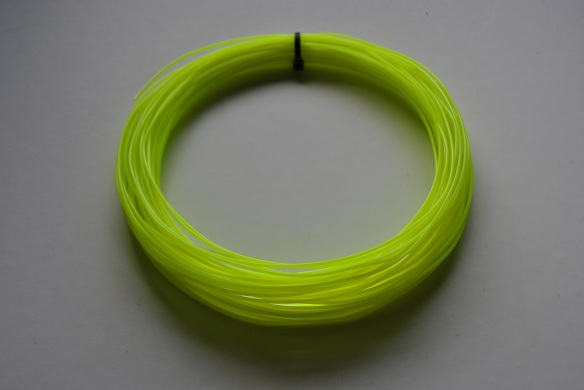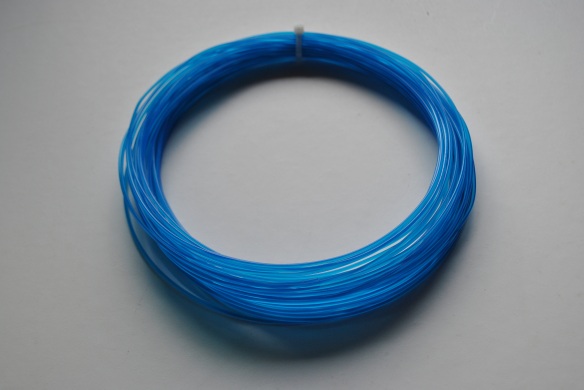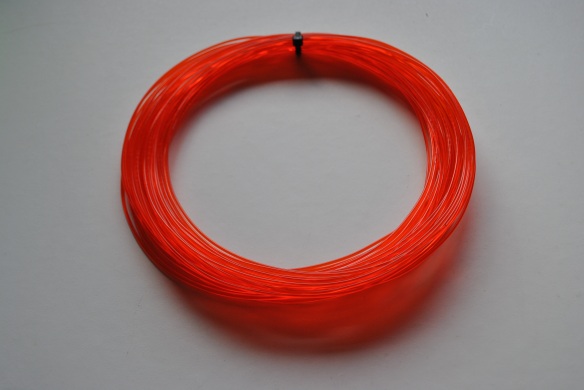Hi there, it’s me again. Today we’re going to discuss some myths and truths about the most common 3D printing materials used in FDM (Fused Deposition Modeling) technology, which is applied in the usual affordable desktop 3D Printers like my MakerBot Replicator2, Cube, Solidoodle, RepRaps, uPrinters and so on…
Honestly I felt – based on your questions and feedback – that it would be really necessary and important to clarify some key facts about PLA (Polylactic acid) and also the pros and cons, I mean the the advantages and disadvantages of PLA vs ABS (Acrylonitrile butadiene styrene) when used on FFD printers (such as the Makerbot Replicator2, Thing-O-Matic, Cupcake, Mendel, Felix, Rostock, UP!, etc.).
At first, I really would like to say that PLA is an absolutely strong and very durable material for 3D printing.
There are a couple of myths around this great material (PLA):
Some of you think that PLA will dissolve in water and/or will degrade in moist or wet environments. That is totally false. The 3D printable plastic, which is often used as a support material with dual extrusion 3D printers and which dissolves in water is PVA (Polyvinyl alcohol), not PLA.
Another fake myth is the durability of this great material. Some people – even some 3D print enthusiasts – are afraid from PLA, because they think that it will self destruct and simply become undone in a matter of months, just because PLA is biodegradable. I have to repeat myself, again, not true.
“Biodegradable” means – in my opinion and literally as well – that the product is strong and performs its function very well but when you throw it in a landfill or soil it will ultimately break down, of course not instantly, it takes a couple of years to complete the biodegradation process.
This is actually much more environmental-friendly comparing to ABS which takes over hundreds of years to break down. In addition PLA is made from natural resources such as corn starch or sugar cane, which makes this great material the right choice to create plastic parts at home. Just think about it, what if it will be true and the revolution of additive manufacturing and desktop 3D printers was going to escalate, everyone would like to be a designer and will print the own ideas day and night. We should be more responsible for our mother nature and not 3D print too much ABS junk. (Although we have to recognize, that ABS and PLA could be recycled as well.)
Some people claim that ABS is much stronger than PLA. That’s a little bit more complex, because the sentence mentioned above is absolutely true. This is the most recurring myth in the PLA vs ABS war and it’s also absolutely inaccurate: if you compare injection molded parts, ABS parts are pretty much stronger than it’s PLA counterparts; however we’re doing our 3D printed prototypes layer by layer, not injection molding and this changes things considerably:
A 3D printed part in PLA is MUCH stronger than a part printed in ABS. This is because PLA has much stronger layer bonding than ABS.
Let me tell you some words about layer bonding: unlike injection molding, FDM printers 3D print layer by layer so layer bonding is what determines the part strength.
If you are familiar with 3D Printing you’ll know that the strength of a 3D printed plastic part changes depending on the direction: if you pull perpendicularly to the Z axis – I mean vertically – (where layers are deposited), they will detach; if you pull in any other direction the part is much stronger. It behaves a bit like wood, this kind of anisotropy is really characteristic for natural wood products, and for 3D printed wood as well.
Because PLA has much stronger layer bonding it’s almost as strong in all directions (even when pulled in the Z axis).
ABS on the other hand, will detach layers much faster and much easily than PLA, making 3D printed ABS parts less strong. (they aren’t weak either; PLA parts are just stronger).
In my next blog entry, I want to discuss the PLA vs ABS thing in practice; there will be a lot of useful information about the shrinkage factor, rigidity, post-processing/sanding and melting temperature, so stay tuned;)








Pingback: Rapid prototípusgyártás – 3D nyomtatással | parametric | art
Pingback: 3D nyomtatás különböző technológiákkal I. – az FDM eljárás | 3D Fizz – A 3D nyomtatás világa
Pingback: 3D printing plastics – PLA vs ABS in practice | 3dfizz – a great 3D print community
PLA has a big problem for durable parts: you shouldn’t use it under hot, I mean, if you leave a printed PLA part inside your car in a sunny day it will melt as chewing-gum.
LikeLike
absolutely agree, as I wrote when its about heat or sun ABS might be the only choice. I’m looking forward to check the laywood nd laybrick material soon if they could be used outdoor as well…
LikeLike
Pingback: 3D Drucken in der Bauindustrie | 3dfizz - die Gemeinschaft um 3D Drucken
Pingback: 3D nyomtatás flexibilis anyaggal – 3D nyomtatott gumiszerű tárgyak | parametric | art
Pingback: 3D nyomtatáshoz használt műanyagszálak | 3dfizz
What about nylon?
LikeLike
Pingback: Building a Mendel90 RepRap 3D Printer Using Nophead's Kit » Sam Kear Dot Com
Pingback: Which filament is the best for your desktop 3d printer? | 3dfizz – a great 3D print community
http://www.pearltrees.com/#/N-s=1_3639647&N-u=1_275938&N-p=28274502&N-f=1_3639647&N-play=2&N-fa=2747143
LikeLike
JagPrint Offer a vast selection of ABS, Printing Material Suppliers, 3D Printing with lightening delivery.
http://www.jagprint.com
LikeLike
Pingback: Affordable 3d printing pen from Velleman | 3dfizz – a great 3D print community
Pingback: The best 3d printer filaments for the best price, is it a fairy tale? | 3dfizz – a great 3D print community